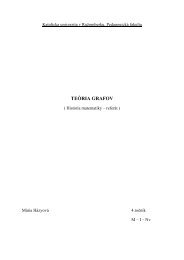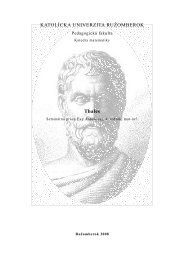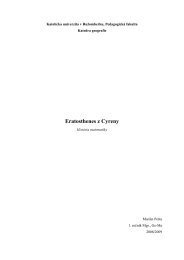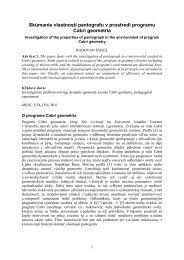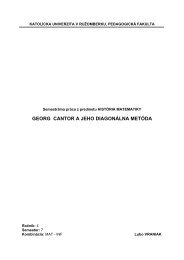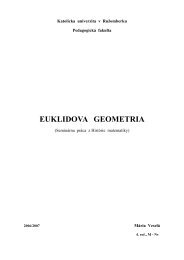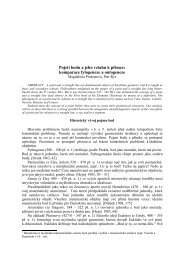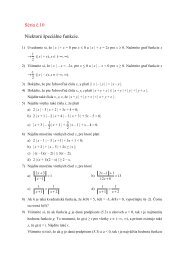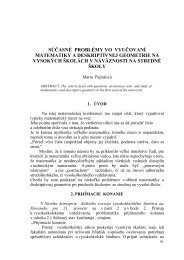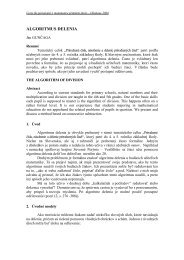Katedra matematiky - Katolícka univerzita v Ružomberku
Katedra matematiky - Katolícka univerzita v Ružomberku
Katedra matematiky - Katolícka univerzita v Ružomberku
- No tags were found...
You also want an ePaper? Increase the reach of your titles
YUMPU automatically turns print PDFs into web optimized ePapers that Google loves.
156 Tadeusz Ratusińskiof math’s tasks. This is one of basic property of didactic games which canbe used as training tasks, math’s problem or educational "provocation"....What is it the game? We can use notion of game as the action (themoves) executed by playing persons or teams (at least two), peaceably withsettled forward the rules, which is the aim victory of one of playing persons(one of teams) [4].Didactic game is a specific game, which bases on basic function of thechild’s psyche, on need of play and this game influences on his intellectualactions consciously [3].Rules of didactic game characterize, that:• realization of move peaceable with rules of game requires the realizationthe operation, which capture is the aim of teaching,• every evaluation of strategy of game is connected to discovery of propertyor dependence, which perception is the aim of teaching [9].The utilization of the games is one of methods to make pupils more interestedin mathematics, which inflicts, that their approach to this "difficult"subject becomes positive. This positive putting is the essential element ofdidactic success.Currently didactic games, as a method of education, became more popularat schools. Usage such games has three main functions:• motivating to undertake intellectual effort,• didactic, they teach contents and the methods of mathematics,• educational, they teach rules of team’s work [4].Mathematical didactic games have well-chosen mathematical contentsand constructed principles of them lead to mathematical activities. Additionallythey introduce element of rivalry.3. Reductive methodReductive method called also reduction is a method "moving from end tobeginning". It is very useful in process of solving mathematical problems.In this method we start from the point we want to prove, from the questionwhich was put in the task. Answering the question: "what would it sufficedto know...?, we formulate next questions, easier and more easier, answersof which would lead us to the solution of the task. Proceed until we gotquestion, which is obvious to us [7].We resolve the task on numbers of the different tasks which lead to thesolution of the task from which we went out on the beginning.




